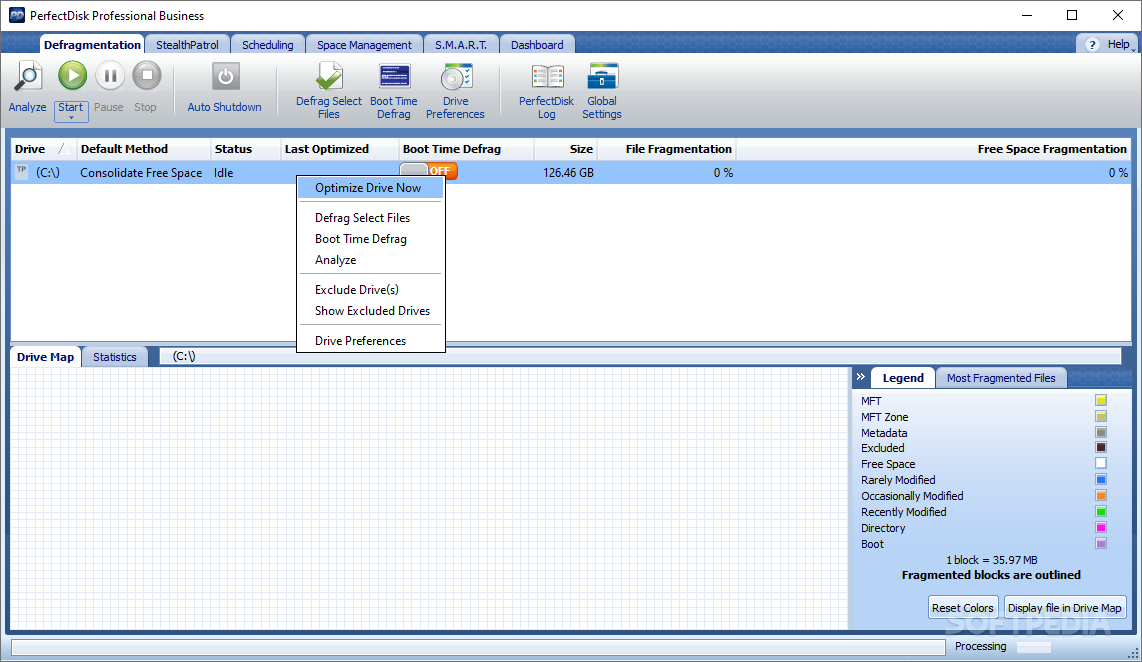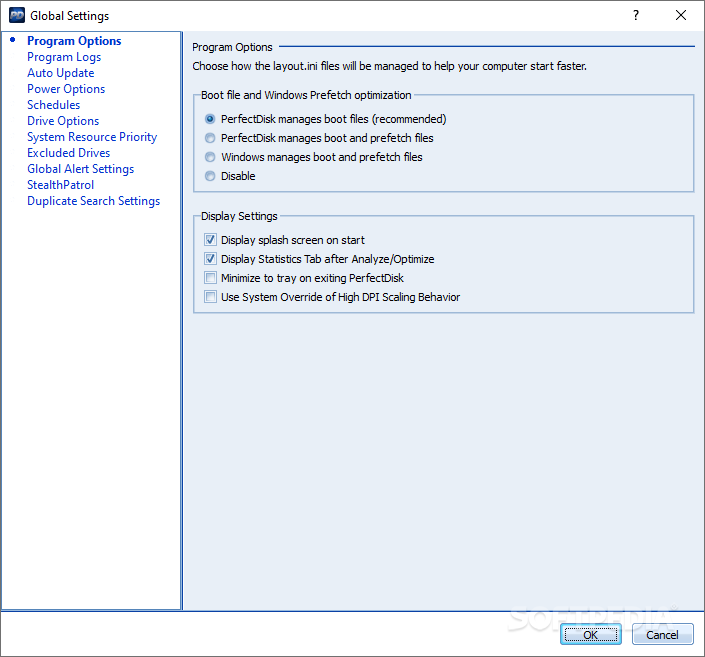

- Perfectdisk 14 pro boot time drivers#
- Perfectdisk 14 pro boot time windows 10#
- Perfectdisk 14 pro boot time software#
- Perfectdisk 14 pro boot time Pc#
- Perfectdisk 14 pro boot time series#
If the bootloader is intact, the firmware starts the bootloader only if one of the following conditions is true: If Secure Boot is enabled, the firmware examines the bootloader’s digital signature to verify that it hasn’t been modified.
Perfectdisk 14 pro boot time Pc#
When a PC equipped with UEFI starts, the PC first verifies that the firmware is digitally signed, reducing the risk of firmware rootkits. There’s no way for the PC to tell whether it’s a trusted operating system or a rootkit. PCs without Secure Boot simply run whatever bootloader is on the PC’s hard drive. When a PC starts, it first finds the operating system bootloader. The sections that follow describe Secure Boot, Trusted Boot, ELAM, and Measured Boot.
Perfectdisk 14 pro boot time windows 10#
Fortunately, all Windows 10 and Windows 11 PCs that meet Windows Hardware Compatibility Program requirements have these components, and many PCs designed for earlier versions of Windows have them as well. Secure Boot and Measured Boot are only possible on PCs with UEFI 2.3.1 and a TPM chip. Secure Boot, Trusted Boot, and Measured Boot block malware at every stage The PC’s firmware logs the boot process, and Windows can send it to a trusted server that can objectively assess the PC’s health.įigure 1 shows the Windows startup process.įigure 1.
Perfectdisk 14 pro boot time drivers#
ELAM tests all drivers before they load and prevents unapproved drivers from loading. Windows checks the integrity of every component of the startup process before loading it. PCs with UEFI firmware and a Trusted Platform Module (TPM) can be configured to load only trusted operating system bootloaders.

Windows supports four features to help prevent rootkits and bootkits from loading during the startup process: These kits pretend to be one of the trusted drivers that Windows uses to communicate with the PC hardware. These kits replace a portion of the operating system kernel so the rootkit can start automatically when the operating system loads.
Perfectdisk 14 pro boot time software#
These kits replace the operating system’s bootloader (the small piece of software that starts the operating system) so that the PC loads the bootkit before the operating system. These kits overwrite the firmware of the PC’s basic input/output system or other hardware so the rootkit can start before Windows. Often, rootkits are part of an entire suite of malware that can bypass local logins, record passwords and keystrokes, transfer private files, and capture cryptographic data.ĭifferent types of rootkits load during different phases of the startup process: Because rootkits have the same rights as the operating system and start before it, they can completely hide themselves and other applications. Rootkits are a sophisticated and dangerous type of malware that run in kernel mode, using the same privileges as the operating system. Then, we’ll show you how Windows can protect you. Even on PCs without UEFI, Windows provides even better startup security than previous versions of Windows.įirst, let’s examine what rootkits are and how they work. In the unlikely event that malware does infect a PC, it can’t remain hidden Trusted Boot can prove the system’s integrity to your infrastructure in a way that malware can’t disguise. When you run Windows 10 or Windows 11 on a PC or any PC that supports Unified Extensible Firmware Interface (UEFI), Trusted Boot protects your PC from malware from the moment you power on your PC until your anti-malware starts. Modern malware-and bootkits specifically-are capable of starting before Windows, completely bypassing operating system security, and remaining completely hidden. However, those security features protect you only after Windows starts. Those are just some of the ways that Windows protects you from malware.

Before an app can change system settings, the user would have to grant the app administrative privileges by using User Account Control. Windows Defender SmartScreen warns users before allowing them to run an untrustworthy app, even if it’s recognized as malware. Windows Defender Antivirus uses cloud-powered real-time detection to identify and quarantine apps that are known to be malicious. Windows has multiple levels of protection for desktop apps and data, too. For instance, Microsoft Store apps are sandboxed and lack the privileges necessary to access user data or change system settings.
Perfectdisk 14 pro boot time series#
Even if a malicious app does get through, the Windows 10 operating system includes a series of security features that can mitigate the impact. This certification process examines several criteria, including security, and is an effective means of preventing malware from entering the Microsoft Store. Except for apps that businesses develop and use internally, all Microsoft Store apps must meet a series of requirements to be certified and included in the Microsoft Store. The Windows operating system has many features to help protect you from malware, and it does an amazingly good job.


 0 kommentar(er)
0 kommentar(er)
